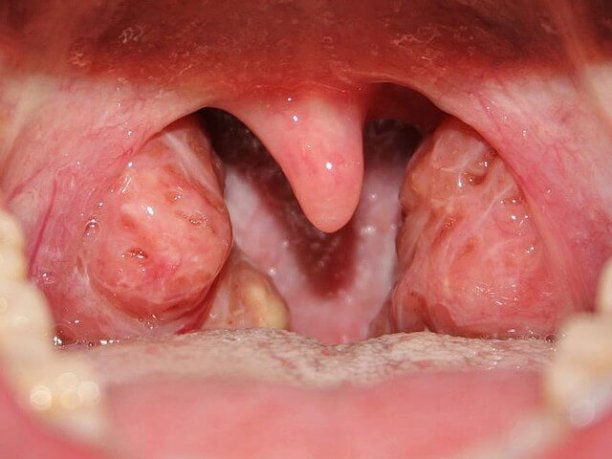Winter can be a challenging time for children’s health, especially when it comes to throat problems. The cold air, dry indoor environments, and seasonal infections make children more susceptible to throat discomfort. Here’s an in-depth look at common throat issues in children during winter and how to protect your child’s throat from them.

Sore Throat
A sore throat is one of the most frequent winter complaints. It’s usually caused by a viral or bacterial infection. During the colder months, viral infections such as the flu and the common cold become more prevalent, leading to throat irritation. Sore throats may also be caused by breathing in dry, cold air or indoor heating systems, which dry out the throat lining.

Symptoms are:
- Pain when swallowing
- Fever
- Redness or swelling in the throat
- White patches or pus on the tonsils
- Swollen lymph nodes in the neck
Treatment:
- Viral Sore Throat: This usually resolves on its own. Make sure your child stays hydrated, gets rest, and uses pain relievers like solution for comfort. Gargling with warm salt water can also help soothe the throat.
- Bacterial Sore Throat (Strep Throat): If your child’s sore throat is caused by a bacterial infection, they may need antibiotics to treat the infection. Symptoms like severe pain, high fever, and swollen tonsils may indicate strep throat, then consult with an ENT surgeon for diagnosis and treatment.
Tonsillitis
Tonsillitis is the inflammation of the tonsils, often caused by viral or bacterial infections. It is common during winter because of the spread of viruses. The tonsils act as the body’s first line of defense against infections, and when they become infected, they can swell, causing difficulty swallowing and sore throat.
Symptoms are:
- A sore throat that lasts more than a couple of days
- Difficulty swallowing
- Fever
- Swollen or red tonsils, sometimes with white patches
- Bad breath
Treatment:
- Viral Tonsillitis: Most viral tonsillitis cases will resolve on their own. Hydration, rest, and pain relief through medications are the best tonsillitis treatments.
- Bacterial Tonsillitis (Strep): For bacterial tonsillitis, antibiotics are necessary. If left untreated, bacterial infections can lead to complications like ear infections or more serious throat conditions.

Croup
Croup is a respiratory condition commonly seen in children, typically caused by a viral infection. The virus causes swelling in the upper airways, leading to a characteristic “barking” cough. Croup often begins like a cold, with a runny nose, mild fever, and hoarseness, but then progresses into a cough and difficulty breathing, especially at night.

Symptoms are:
- A barking cough (similar to the sound of a seal)
- Stridor, which is a high-pitched sound while breathing in (this occurs when there is difficulty breathing through the swollen airways)
- Hoarseness or loss of voice
- Fever
Treatment:
- Mild Croup: For mild cases, a humidifier or taking your child into a steamy bathroom can help relieve the symptoms. Keeping your child calm is essential, as crying can make breathing more difficult.
- Moderate to Severe Croup: In more serious cases, your child may need medications to reduce swelling and ease breathing. If your child’s breathing is labored or they are struggling to catch their breath, seek ent attention immediately.
Laryngitis
Laryngitis occurs when the voice box (larynx) becomes inflamed, usually due to a viral infection. It is commonly associated with a cold or other upper respiratory infection. Children who have been coughing a lot or who have been exposed to dry air may also develop laryngitis, which leads to hoarseness or loss of voice.
Symptoms are:
- Hoarseness or complete loss of voice
- A scratchy or sore throat
- Difficulty speaking or breathing (in more severe cases)
- Dry throat or cough
Treatment:
- Encourage your child to rest their voice and avoid whispering, as this can strain the vocal cords further.
- Offer warm, soothing drinks such as honey and lemon in warm water (for children over 1 year of age).
- Keep your child hydrated to help soothe their throat and prevent dryness.
- Using a humidifier can also help relieve dryness in the airways, which is common during winter.

Dry Throat and Dehydration
The dry, cold air in winter can lead to throat irritation, especially when your child is exposed to it for long periods. Indoor heating systems can also contribute to dryness by lowering humidity levels. When your child’s throat is dry, it can feel scratchy, which may worsen with coughing or talking.

Symptoms are:
- Dry or scratchy throat
- Difficulty swallowing or a feeling of tightness in the throat
- Complaints of thirst, which may indicate dehydration
Treatment:
- Hydration: Encourage your child to drink plenty of fluids throughout the day. Warm liquids like soup, tea, or warm water with honey can help soothe a dry throat. Avoid sugary or caffeinated drinks as they can worsen dehydration.
- Use a Humidifier: Place a humidifier in your child’s room to keep the air moist. This can help prevent the throat from drying out, especially at night when the air tends to be drier.
- Avoid Irritants: Make sure your child avoids cigarette smoke or other irritants that can dry out the throat further.
Prevention Tips to Protect Your Child’s Throat
1. Encourage Proper Hand Hygiene Teaching your child to wash their hands regularly, especially after touching public surfaces or coughing/sneezing, is one of the best ways to prevent infections. The cold and flu viruses spread rapidly in the winter, and good hygiene can help reduce the chances of getting sick.
2. Dress Warmly Ensure your child wears appropriate clothing to protect against the cold, including a scarf to cover their throat. Cold air can irritate and inflame the throat, so protecting it from harsh winds is essential.
3. Boost Immunity A healthy diet rich in fruits, vegetables, and other immune-boosting foods (like Vitamin C-rich oranges, berries, and leafy greens) can help your child’s body fight off infections. Regular physical activity and proper rest also play key roles in maintaining a strong immune system.
4. Avoid Exposure to Sick Individuals During flu season, try to limit your child’s exposure to others who are ill. If someone in the family is sick, encourage them to wear a mask and practice good hygiene to reduce the risk of transmission.
5. Hydration is Key Staying hydrated is crucial in the winter months. Encourage your child to drink plenty of water and offer them warm beverages like tea, which can be soothing for the throat and provide extra hydration.
6. Proper Rest A good night’s sleep is essential for your child’s health and immunity. Ensure your child gets enough rest each night, especially during the winter months when the body is working harder to stay healthy and fight off infections.
When to See an ENT Specialist
If your child’s throat issue persists, becomes severe, or is accompanied by a high fever, difficulty swallowing, or trouble breathing, it’s important to consult with an ENT specialist in Nagpur. An ENT can properly diagnose the condition, provide necessary treatment, and offer advice on preventing further issues.
Winter can bring about various throat issues for children, but with the right precautions and treatments, you can protect your child’s health. By being proactive in encouraging good hygiene, maintaining hydration, and boosting their immune system, you can reduce the risk of seasonal throat issues.
